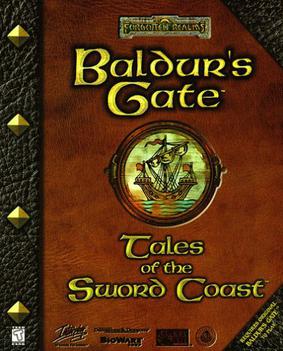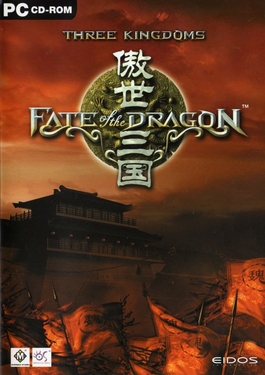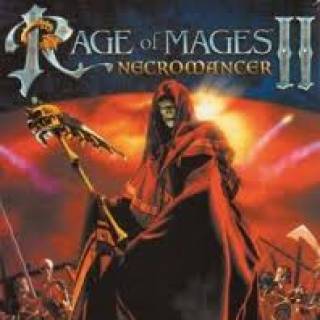
Soldier of Fortune is a first-person shooter video game developed by Raven Software and published by Activision in 2000 for Microsoft Windows. It was later released for the PlayStation 2, as well as the Dreamcast, while Loki Software also made a port for Linux. It was digitally re-released on GOG.com on October 2, 2018, along with its two successors. The player takes on the role of a U.S. mercenary as he trots around the globe hoping to halt a terrorist nuclear weapons plot.

Star Trek: Armada is a real-time strategy video game for Microsoft Windows developed and published in 2000 by Activision. The game's look and feel is based primarily on Star Trek: The Next Generation, and features a few of its main characters and ships. Playable factions include the United Federation of Planets, the Klingon Empire, the Romulan Star Empire and the Borg. The game received mixed to positive reviews and was noted for being one of the better Star Trek games to be made. A sequel, Star Trek: Armada II, was released on November 16, 2001.

Earth 2150, also known as Earth 2150: Escape from the Blue Planet, is a real-time strategy game, originally published in 2000 by SSI and Polish developer Reality Pump and a sequel to Earth 2140. 2150 was one of the first commercial full-3D games of its kind. A sequel to Earth 2150, Earth 2160, was published in August 2005. The game also has two stand-alone expansion packs: Earth 2150: The Moon Project, and Earth 2150: Lost Souls.

Ground Control is a real-time tactics video game developed by Massive Entertainment and published by Sierra Studios, released for Microsoft Windows in 2000. The game focuses on a conflict between two factions vying for control of a planet and a series of alien artefacts contained on its surface, in which players take the role of an officer for each faction, working to achieve their objectives through using a variety of futuristic style of troops, engaging different tactics that make use of their units, the terrain and careful planning.

Baldur's Gate: Tales of the Sword Coast is an expansion pack of the fantasy role-playing video game Baldur's Gate. Developed by BioWare and published by Interplay, it adds 20 to 30 extra hours of gameplay, including the addition of four areas and minor tweaks to some of the mechanics. The expansion consists of four notable quests that take place within the same game world as Baldur's Gate, and sees players taking their character and their party of companions across the Sword Coast, from travelling to a distant island, to exploring the fortress dungeon of a dead dwarf. Tales of the Sword Coast sold 600,000 units by 2003.

Star Wars: Force Commander is a real-time strategy video game released for the Microsoft Windows platform in 2000. It was co-developed by Ronin Entertainment and LucasArts, and published by LucasArts. Its plot interweaves between Star Wars: A New Hope and Return of the Jedi, taking place in key battles. Peter McConnell created remixed tracks of John Williams's original score with influences from hard rock and techno music.

Sea Dogs (Корсары) is a 2000 Russian role-playing video game for Microsoft Windows, developed by Akella and published by Bethesda Softworks. In it, the player is the captain of a ship and can serve as a privateer to a European power, or as a pirate. The game uses a custom 3D game engine and includes gameplay similar to Sid Meier's Pirates!, while also being a true inter-character dialog-centered RPG.
Age of Empires is a series of historical real-time strategy video games, originally developed by Ensemble Studios and published by Xbox Game Studios. The first game was Age of Empires, released in 1997. Nine total games within the series have been released so far as of October 28, 2021.

Three Kingdoms: Fate of the Dragon is a video game developed by Overmax Studios in 2000 for the PC. It is based on the historical background of the epic 14th century novel Romance of the Three Kingdoms by Luo Guanzhong. As one of the three Warlords of the Kingdoms, in 184 AD China, the player must build their own kingdom, develop new technologies and create mighty armies to conquer the other Warlords and ultimately take control of the Three Kingdoms and reunify China. Fate of the Dragon is a real-time strategy game very similar in format to that of the Age of Empires series, developed by Ensemble Studios, in which the user takes on the role of a character, namely Liu Bei, Sun Quan and Cao Cao from one of the Three Kingdoms and controls their kingdom through such means as pointing and clicking on certain parts of the map to decide what to do. The player is tasked with collecting various resources and building a standing army in order to protect their borders and defeat the other kingdoms in the game.

Star Trek: New Worlds is a strategy game published in 2000 by Interplay in which the player can choose to command the forces of the United Federation of Planets, Klingons or Romulans. The player's goal is to build successful colonies on a series of newly discovered planets while battling off competing factions.

Blaze & Blade: Eternal Quest, also known as simply Blaze & Blade, is a multiplayer action role-playing game developed by T&E Soft for the PlayStation and Microsoft Windows. It is the first in the series, and the only one released outside Japan.

Commandos: Behind Enemy Lines is a 1998 real-time tactics video game developed by the Spanish company Pyro Studios and published by Eidos Interactive. The game sees players take control of a group of six Allied Commandos, who conduct a range of missions across wartime Europe and Africa, using small unit tactics. Each mission's objective varies, but ranges from sabotage, assassination or rescuing captured allied units, with players having a full view of a mission's map to plan their strategy and its execution in advance.

Warlords Battlecry, sometimes mislabeled as Warlords 3: Battlecry, is a real-time strategy video game released in 2000 for Microsoft Windows. It was the first of new series of RTS games set in Steve Fawkner's Warlords franchise.

The Devil Inside is a horror-themed third-person shooter video game developed by Gamesquad and published by Cryo Interactive and TalonSoft for Microsoft Windows in 2000.

Starship Troopers: Terran Ascendancy, also known as simply Starship Troopers in the U.S., is a real-time tactics video game developed by Blue Tongue Entertainment and published by Hasbro Interactive under the MicroProse label in 2000. The game is based on both the 1997 movie Starship Troopers and the 1959 book Starship Troopers by Robert A. Heinlein.

Atlantis: The Lost Empire – Trial by Fire is a 2001 first-person shooter game developed by Zombie Studios and published by Disney Interactive. It was released on May 18, 2001, for Microsoft Windows. The game is based on the film Atlantis: The Lost Empire.

Wizards & Warriors is a role-playing video game for Microsoft Windows designed by David W. Bradley.

Freedom: First Resistance is a third-person action-adventure video game for PC. The game was published by Red Storm Entertainment and released in the United States on 12 December 2000. The game is based on Anne McCaffrey's trilogy of novels titled the Catteni Series.

Rage of Mages II: Necromancer is a role-playing video game for Microsoft Windows that was developed by Nival and released in 1999. It is known as Allods 2: Master of Souls in Russia. It contains 43 missions and a multiplayer mode that allows play with up to 16 players.

Links LS 2000 is a golf video game developed by Access Software and published by Microsoft. It is part of the Links series and was released in 1999 for Microsoft Windows, and in 2000 for Macintosh. It was followed by Links 2001.




















